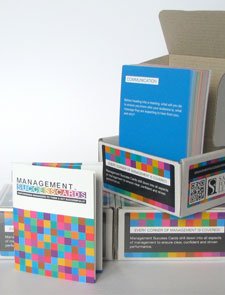What made you leave your last job?
What made you leave any job?
I’ve left jobs because:
- I was abused by the boss.
- I was not challenged enough.
- The role within the service was dumbed down and opportunities to grow in the role were cut off.
- Organisation-wide change meant narrowing of role responsibilities when I wanted more challenge.
- The boss was unethical.
- The boss did not permit me to network with industry peers.
- The job was promoted as one thing but turned out to be something different.
- Day one was dreadful (totally left to my own devices: isolating) and not much changed from that day onwards.
Do any of these relate to you? Maybe you’ve not left physically but for some reason you might not be fully present, all-in, and engaged.
The cost of staff turnover can be enormous, and in some cases, crippling for a business or organisation, so retention is important, very important. Retaining staff means thinking about the employee experience. Richard Branson’s famous quote,

The cost of staff turnover can be enormous, and in some cases, crippling for a business or organisation, so retention is important, very important. Consider the following five ways you can improve an employee’s experience in your workplace and therefore improve engaged, productivity and retention.

1. Thorough Induction / Onboarding
There is nothing worse than turning up all excited to give a great first impression and the boss doesn’t even show. It’s disheartening, right? If you’ve experienced then you are likely to not repeat it for any new starts in your charge. If you interviewed the person then you need to be the face they see on day one. Why? because your’s is the face they’ll recognise and they’ll feel some level of rapport with you. You don’t have to spend all day with them, you could introduce them to someone else who’ll run through an induction process.
From knowing what polices and procedures are in place to working the phone system, to where the toilet is, don’t assume your new start knows anything as it may be the first time they’ve even had access to the workplace. If you’re not sure what to cover, imagine your first day, what did you want to know, need to know; what were you a bit shy about asking; what indirect aspects of the workplace did you want to know (best nearby cafe, where people find resources, etc). Ask some staff what they wish they’d been told on day one.
2. Encourage Networks
Internal networking and external/industry networking is critical for developing key relationships, shared information, collaborating and accessing opportunities. Networking is not a quick trick or one-off event, it is a long term powerful process that can yield amazing opportunities and build respect for the person and your business.
3. Regular Feedback
Employees want and need to know how well they are performing. They need to know if they are doing well and they need to know if they need to improve, change or fix something. The conversation may feel awkward but doesn’t have to be difficult yet it does need to happen.Successful Feedback is a great resource to use to help feedback conversations stay on track.
4. Development Opportunities
You do not need to carry the burden to identify development opporunities for employees, you can challenge employees to identify what development they may need. Sure, some suggestions might be a bit outrageous however you can redirect the conversation to more realistic opportunities and areas for development. By listening to what employees say they want or need you get to learn more about those who do the lion’s share of the work, plus what’s working and what’s not.
I once worked in an organisation that had a training budget allocation but the director never disclosed how much it was or what rules applied to it. When we had a change of director the training budget was disclosed. Interestingly once we all knew about the training budget, how much it was, etc., there was no stampede to spend, it actually got us to think very carefully about what would be the best return on investment. It encouraged a more focused approach.
5. Follow Up
“Why should I bother if the boss doesn’t care?”
This real case study should tell you why you need to follow up.
Case Study: No Follow up = No Action
In some years, six months would pass before the Managing Director of the company would visit the branch office. During his rare visits he would be quite authoritarian in what he wanted his sales staff to do.
He would draw diagrams all over the white board and talk about targets and how the company will suffer if quality and sales diminished.
He would then have a closed door meeting with the Office Manager to berate him about why the sales team hadn’t achieved what he wanted them to achieve since his previous visit.
Once he had said what he wanted to say to the sales team, barked orders at them and the Office Manager, he would travel back to head office and the team wouldn’t hear from him for weeks, sometimes months. Not a peep. In particular, no one would hear from him about any of the directions and actions he commanded during his branch office visit.
While everyone would prefer the Managing Director to be less aggressive and more engaging with his communication, the other critical keys to why no one would act on his commands are quite obvious:
He didn’t encourage or empower the staff to own the actions he wanted them to take.
He didn’t encourage the sales team to set clear actions, let alone provide clear actions with deadlines with (or for) the sales team.
In his meeting with the Office Manager, he neglected to brief him about what he actually wanted done and what follow-up should happen.
He didn’t tell the sales team or Office Manager he would follow-up with them.
And, he never followed-up with them!
Even if the Managing Director’s style stayed the same, he would probably get better results if he did actually follow-up with his sales team and office manager regularly.
If you agree actions from feedback conversations: follow up!
If you agree tasks for development: follow up!
If you encourage networking: follow up. Follow up, follow up, follow up!
Think about what your own experience is like. Think about your direct reports and consider their experience from their perspective (not what you would like it to be, what it really is). What one action can you take this week that would contribute to better employee experience, knowing that it will contribute to productivity, engagement and retention of great staff.
What do you do to better your employees experience?





